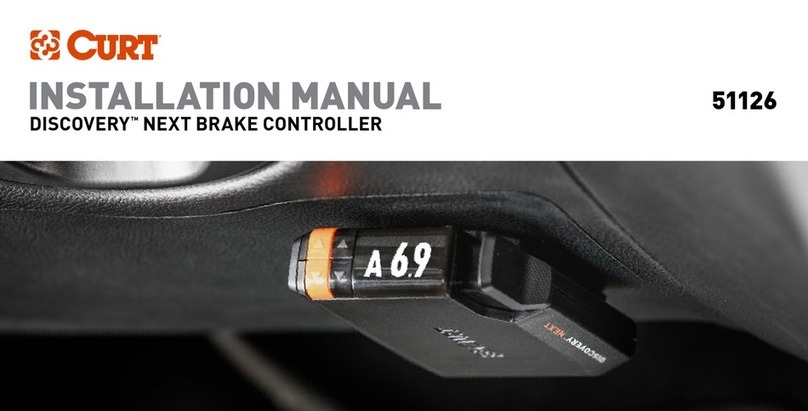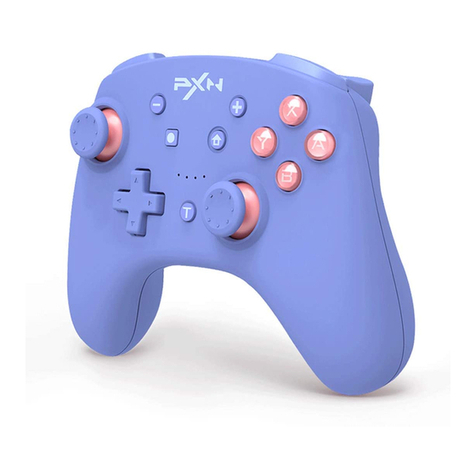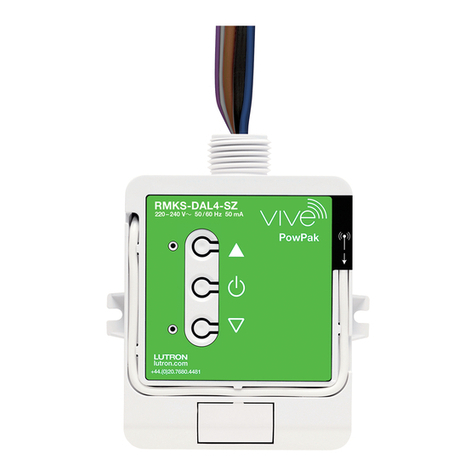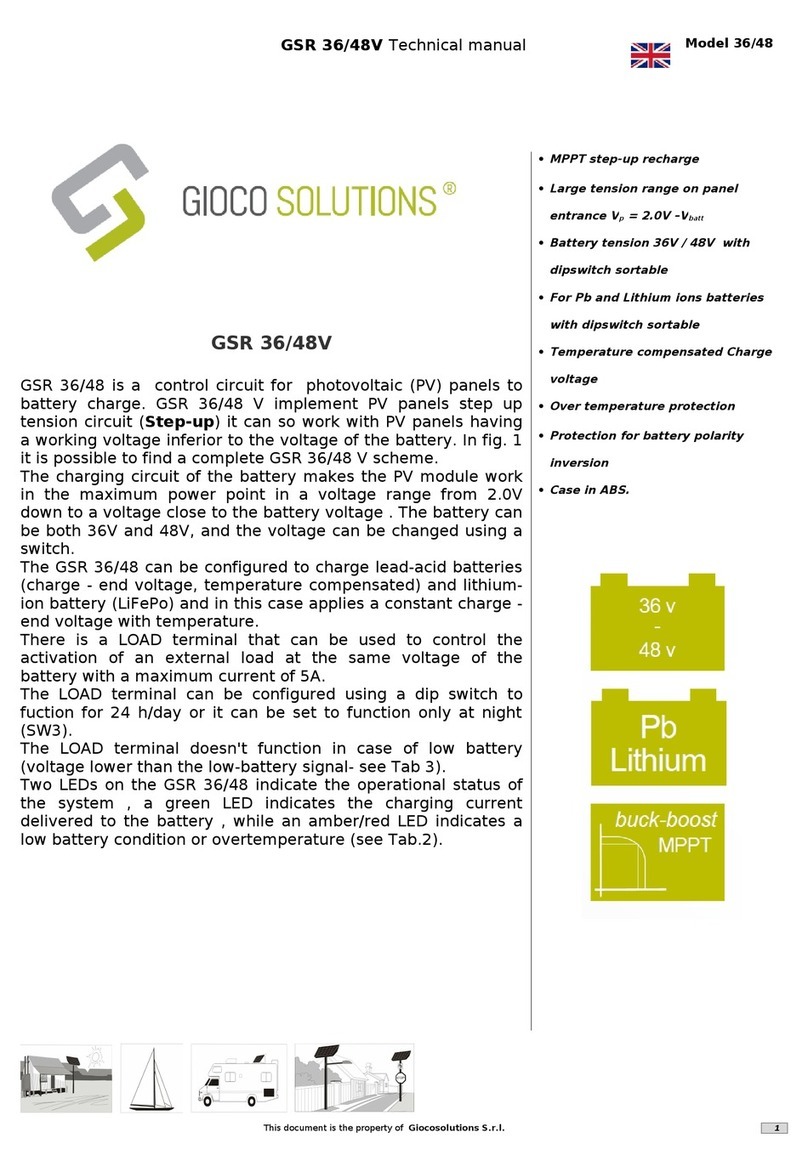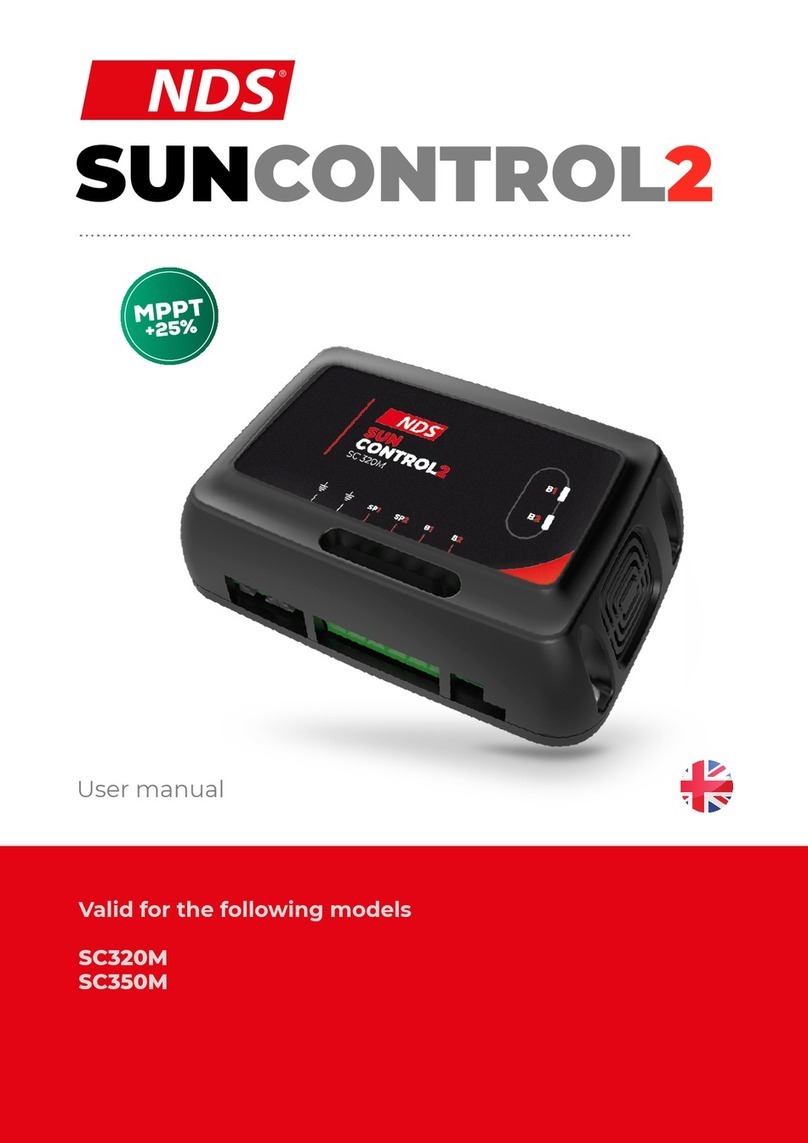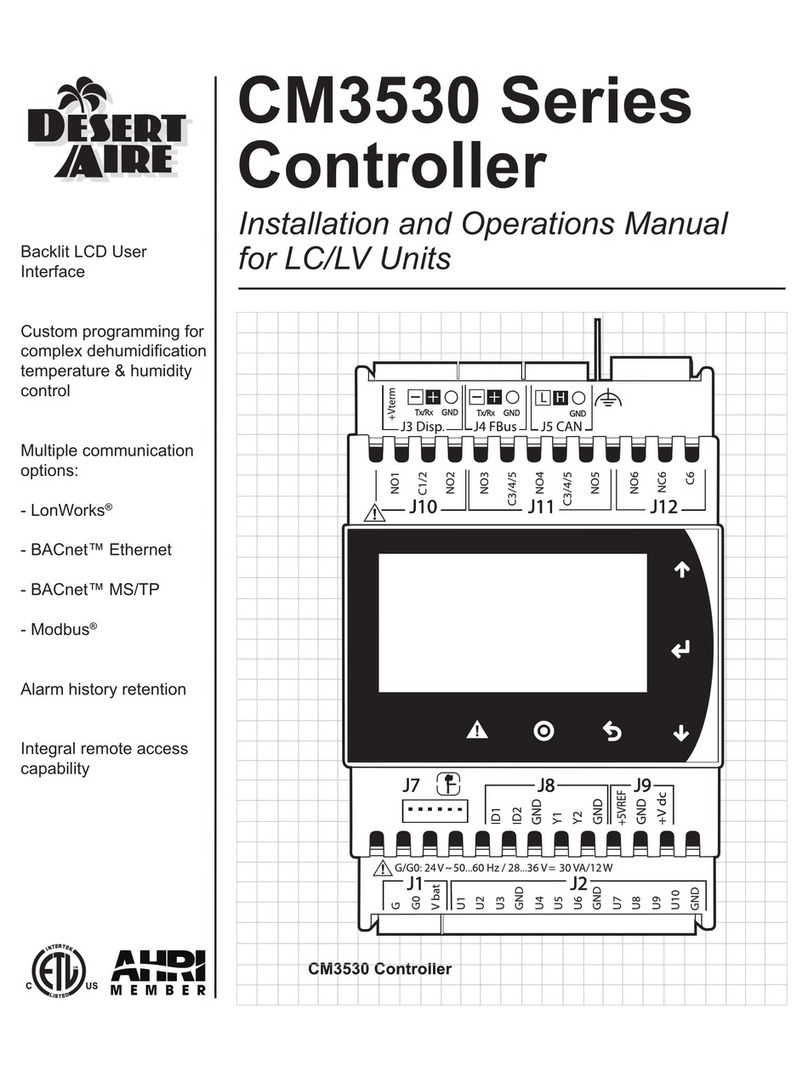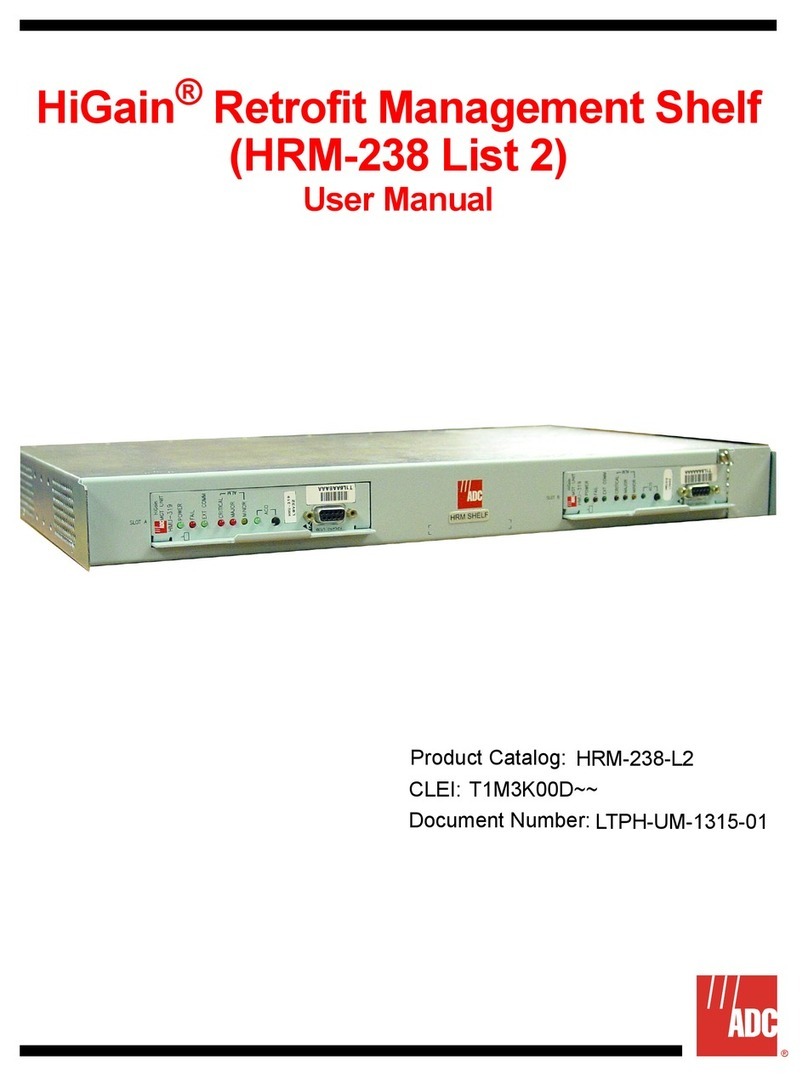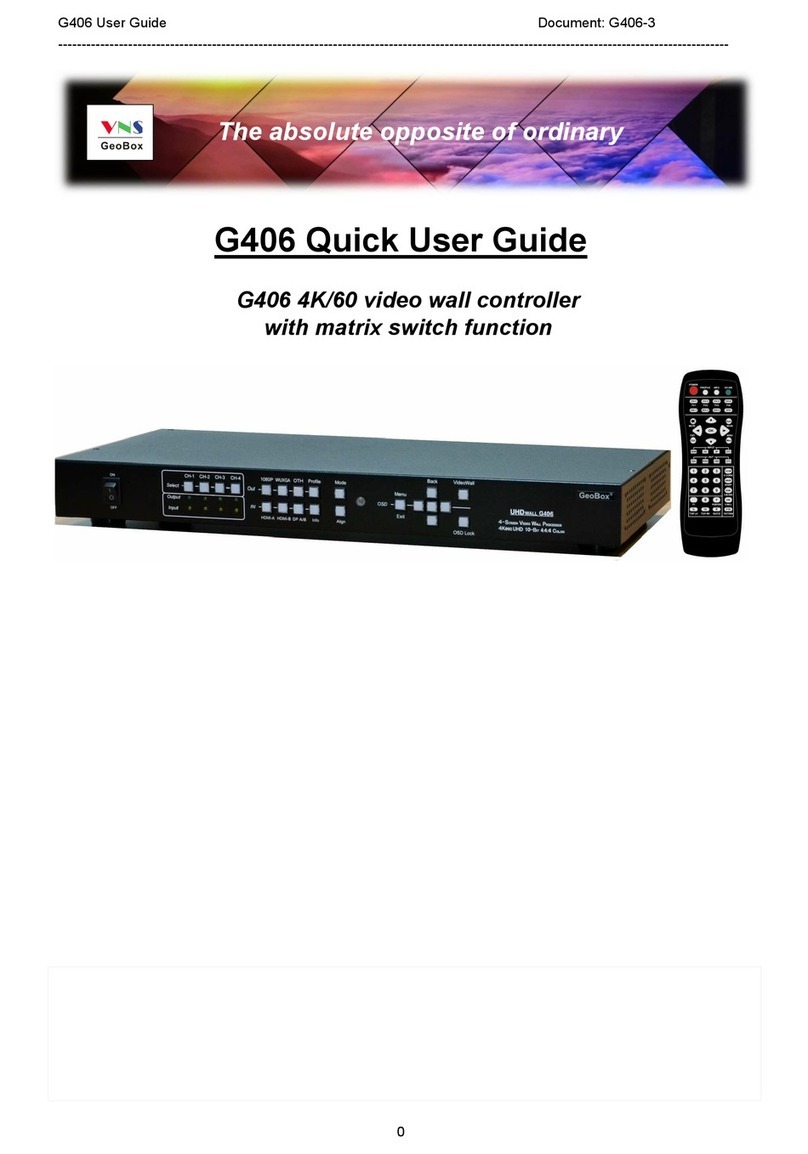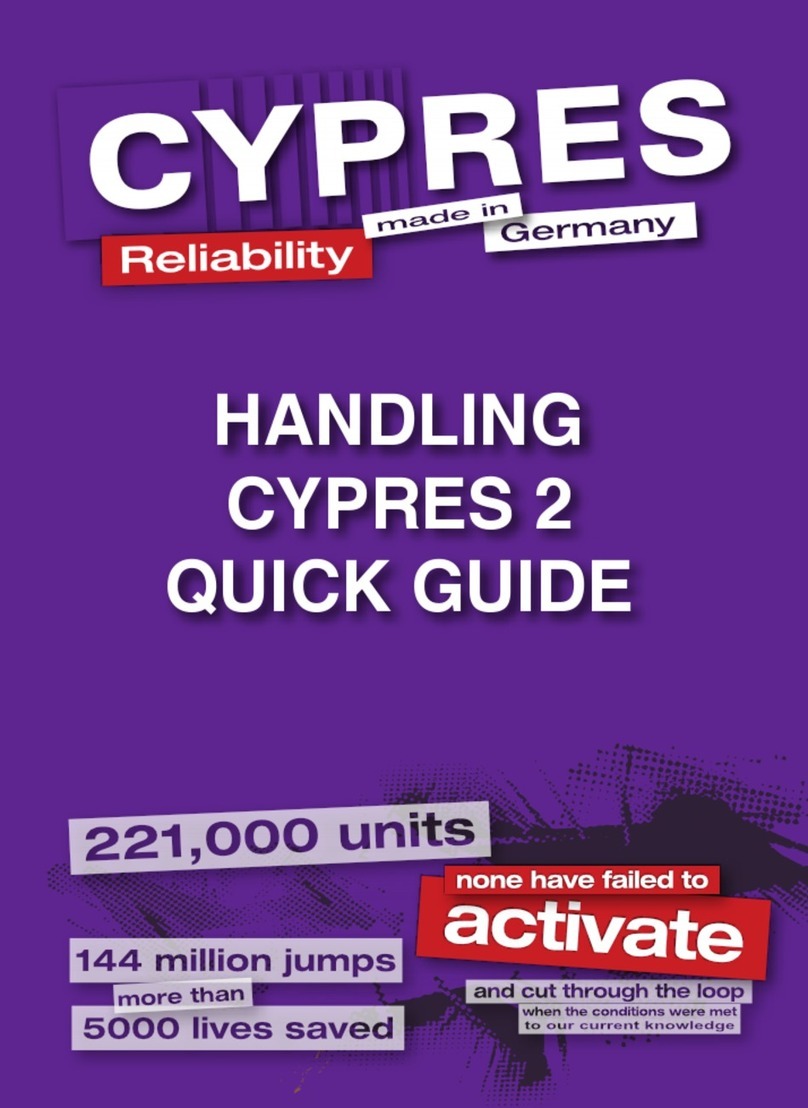Neets Control TanGo User manual

Neets Control - TanGo
Installation Manual

Page 2 of 15
Foreword
This document describes how to install and operate the Neets Control - TanGo.
COPYRIGHT - All information contained in this manual is the intellectual property and copyrighted
material of Neets. All rights are reserved. You may not allow any third party access to content,
information or data in this manual without Neets’ express written consent.
CHANGES - Neets reserve the right to change the specification and functions of this product
without prior notice.
Questions, AFTER reading this manual, can be addressed to your local distributor or:
Neets A/S
Langballe 4
8700 Horsens
Denmark
or you may use our contact form at www.neets.dk
Revision list
This document has the following revision changes:
Author: Date Description Pages Rev
SHJ: 03-11-2016 First release. All 1.00
DB: 07-12-2016 Edits to function description 5 2.00
DB: 13-03-2017 Text corrections in the error indication overview 15 3.00
What is in the box?
When you open the box it will contain the following items:
• 1 x Neets Control - TanGo
• 1 x PoE Power Injector
• 1 x Power cable for PoE adapter matching country of sales
• 11 x Terminal connectors
• 2 x Screws and plugs for wall mounting O4 x 60 mm
• 2 x Screws for mounting on Neets Rack Shelf M4 x 35 mm
• RJ-45 LAN Cable
• Manual

Page 3 of 15
Important Safety Instructions
Caution:
Read these instructions.
Read and understand all safety and operating instructions before using the equipment.
Keep these Instructions.
The safety instructions should be kept for future reference.
Heed all warnings.
Follow all warnings and instructions marked on the equipment or in the user information.
Avoid attachments.
Do not use tools or attachments that are not recommended, as they may be hazardous.
Warning!:
• This equipment should be operated only from the included power supply.
• To remove power from the equipment safely, remove all power cords from the rear of the equipment, or the
desktop power module (if detachable), or from the power source receptacle (wall plug).
• Power cords should be routed so that they are not likely to be stepped on or pinched by items placed upon or
against them.
• Do not defeat the safety purpose of a polarized or grounding-type plug. A polarized plug has two blades with one
wider than the other. A grounding-type plug has two blades and a third grounding prong. The wide blade or the
third prong is provided for your safety. If the provided plug does not fit into your outlet, consult an electrician for
replacement of the obsolete outlet.
• Unplug this apparatus during lightning storms or when unused for long periods of time.
• Refer all servicing to qualified service personnel. There are no user-serviceable parts inside. To prevent the risk of
shock, do not attempt to service this equipment yourself because opening or removing covers may expose you to
dangerous voltage or other hazards. Contact your local Neets reseller or distributor.
• If the equipment has slots or holes in the enclosure, these are provided to prevent overheating of sensitive
components inside. These openings must never be blocked by other objects.
• Do not use this equipment near water.
• To reduce the risk of fire or electric shock, do not expose this apparatus to rain or moisture and objects filled
with liquids.
• Unplug the product before cleaning. Clean only with a dry cloth and not cleaning fluid or aerosols. Such products
could enter the unit and cause damage, fire, or electric shock. Some substances may also mar the finish of the
product.
FCC Class A Notice:
This equipment has been tested and found to comply with the limits for a Class A digital device, pursuant to part
15 of the FCC Rules. Operation is subject to the following two conditions:
1. This device may not cause harmful interference.
2. This device must accept any interference received, including interference that may cause undesired operation.
The Class A limits are designed to provide reasonable protection against harmful interference when the
equipment is operated in a commercial environment. This equipment generates, uses, and can radiate radio
frequency energy and, if not installed and used in accordance with the instruction manual, may cause harmful
interference to radio communications. Operation of this equipment in a residential area is likely to cause harmful
interference, in which case the user will be required to correct the interference at his own expense.
FCC regulations state that any unauthorized changes or modifications to this equipment, not expressly approved by
the manufacturer, could void the user’s authority to operate this equipment.
The lightning bolt triangle is used to alert the user to the presence of uninsulated “dangerous
voltages” within the unit’s chassis that may be of sufficient magnitude to constitute a risk of electric
shock to humans.
The exclamation point triangle is used to alert the user to presence of important operating and
service instructions in the literature accompanying the product.
!

Page 4 of 15
Contents
Foreword . . . . . . . . . . . . . . . . . . . . . . . . . . . . . . . . . . . . . . . . . . . . . . . . . . . . . . . . . . . . . . . 2
Revision list . . . . . . . . . . . . . . . . . . . . . . . . . . . . . . . . . . . . . . . . . . . . . . . . . . . . . . . . . . . . . 2
What is in the box? . . . . . . . . . . . . . . . . . . . . . . . . . . . . . . . . . . . . . . . . . . . . . . . . . . . . . . . . 2
Important Safety Instructions . . . . . . . . . . . . . . . . . . . . . . . . . . . . . . . . . . . . . . . . . . . . . . . . 3
Contents . . . . . . . . . . . . . . . . . . . . . . . . . . . . . . . . . . . . . . . . . . . . . . . . . . . . . . . . . . . . . . . 4
Description . . . . . . . . . . . . . . . . . . . . . . . . . . . . . . . . . . . . . . . . . . . . . . . . . . . . . . . . . . . . . . 5
Function Description . . . . . . . . . . . . . . . . . . . . . . . . . . . . . . . . . . . . . . . . . . . . . . . . . . . . . 5
Specifications . . . . . . . . . . . . . . . . . . . . . . . . . . . . . . . . . . . . . . . . . . . . . . . . . . . . . . . . . . 5
Specifications . . . . . . . . . . . . . . . . . . . . . . . . . . . . . . . . . . . . . . . . . . . . . . . . . . . . . . . . . . . . 6
Installation . . . . . . . . . . . . . . . . . . . . . . . . . . . . . . . . . . . . . . . . . . . . . . . . . . . . . . . . . . . . . . 7
Connection and Controls . . . . . . . . . . . . . . . . . . . . . . . . . . . . . . . . . . . . . . . . . . . . . . . . . . . . 8
Front . . . . . . . . . . . . . . . . . . . . . . . . . . . . . . . . . . . . . . . . . . . . . . . . . . . . . . . . . . . . . . . . 8
Back. . . . . . . . . . . . . . . . . . . . . . . . . . . . . . . . . . . . . . . . . . . . . . . . . . . . . . . . . . . . . . . . 10
How to connect. . . . . . . . . . . . . . . . . . . . . . . . . . . . . . . . . . . . . . . . . . . . . . . . . . . . . . . . . . 13
PoE power supply to TanGo . . . . . . . . . . . . . . . . . . . . . . . . . . . . . . . . . . . . . . . . . . . . . . . 13
PoE power supply from TanGo . . . . . . . . . . . . . . . . . . . . . . . . . . . . . . . . . . . . . . . . . . . . . . 14
Troubleshooting . . . . . . . . . . . . . . . . . . . . . . . . . . . . . . . . . . . . . . . . . . . . . . . . . . . . . . . . . . 15
Error indication using LEDs . . . . . . . . . . . . . . . . . . . . . . . . . . . . . . . . . . . . . . . . . . . . . . . 15

Page 5 of 15
Description
Neets Control – TanGo is a powerful control system enabling intuitive touch control through touch
panels or standard browsers. For easy installation, the TanGo comes with PoE IN and PoE OUT to avoid
need for external PSU for both the control system and an external device such as a touch panel.
Function Description
• 3 Bi-directional RS-232 port or IR ports
Used for controlling projectors, displays, amplifiers & other AV devices with feedback functionality
• 2 Uni-directional RS-232 or IR ports
Used for sending commands to projectors or other AV devices using serial or infrared communication
• 8 General Purpose I/O ports
Used for input/output control of relays, switches and sensors
• 4 Built-in low-voltage relays
Used for contolling external devices such as electrical screens
• Ethernet port
Used for controlling 10 LAN and 8 Neets extension devices and connection to Central Control
and Project Designer as well as access to graphical user interface
• Power over Ethernet (PoE)
PoE IN for power of the TanGo and PoE OUT for power of an external device such as a touch panel
• Email notifications and warnings. Email notification on lamp/filter hours and warnings
• 1 front USB port
Used for easy system configuration, uploading and downloading project files
• Built-in Infrared Learner
IR learner built into the front for easy IR code learning
• Easy mounting
Can be mounted in trunking systems, hidden from sight, or in the IU Neets Rack Shelf
Specifications
RS-232 (Tx+Rx) or IR (controls up to 2 IR devices on each port) 3
RS-232 (Tx) or IR (controls up to 2 IR devices on each port) 2
LAN device control 10
I/O 8
Low voltage relay 4
NEB Bus (with building NEB extender) 1 (5 NEB units)
PoE input 1
PoE output 1
IR Learn option with Device editor Ye s
USB port for programming 1
PIR sensor input Ye s
Light on/off Ye s
Room darkening Ye s
Screen up/down Ye s
Volume control Ye s
Device feedback Ye s

Page 6 of 15
Specifications
Neets Control - TanGo
RS-232 / IR port
Ports 3 x bidirectional
2 x unidirectional
Baud rate 1200 - 115200 bit/sec
Data bits 7, 8
Parity Even, Odd, None
Stop bits 1, 2
IR frequency 400 Hz to 500 Hz
Connector 3 pin screw block
IR learn
IR learn frequency 1 KHz to 150 KHz
Input / Output
Ports 8 x I/0
Input trigger low < 1VDC
Input trigger high < 4VDC
Output type Open drain
Isolated output No
Max voltage load 24 VDC
Max current 0,5 A
Connector 4 pin screw block
Relay Output
Voltage max 30 VDC
Current max 0,5 A
Connector 2 pin screw block
Network (LAN)
Speed 10 / 100 Mbit
Duplex modes Half or Full
DHCP Default off
Default IP 192.168.254.252
Default gateway 192.168.1.1
Default subnet mask 255.255.255.0
PoE input
Compliance 802.3af / 802.3at
802.3af PD mode A + B
PD Class 0 (802.3af) / 4 (802.3at)
PoE output
Compliance 802.3at
Max power output 12 W @ 15 W input
PSE output mode Mode B(pin 4/5 + 7/8)
PoE Injector (included)
Input voltage 100 VAC - 240 VAC
Line frequency 50 Hz - 60 Hz
Max power usage Max 27 W
Connector Cable with connector-
matching country of
sale
General
Width 220 mm
Height 35 mm
Depth 70 mm
Width 8,66 inches
Height 1,38 inches
Depth 1,46 inches
Weight 0,5 kg
Shipping weight 1,0 kg
Shipping dimension 280 mm / 190mm /
(W/D/H) 55 mm
Storage temperature -20 ˚C to 50 ˚C
Storage moisture Non-condensing
Operation temperature 0 ˚C to 30 ˚C
Operation moisture Non-condensing
Product number
310-0305 TanGo
Approvals
IEC/EN 61000-6-1
IEC/EN 61000-6-2
FCC Part 15, Class A
CE

Page 7 of 15
Installation
The Neets Control – TanGo is designed to be easily installed in any convenient location. The unit can be
placed on a desk free standing. Simply unpack the unit, mount the adhesive feet and it is ready to go.
Alternatively, the unit can be mounted under a table or on a ceiling with the included self-tapping
screws. Unpack the unit, place the unit on the surface where it is to be mounted, and screw the
two screws through the holes in the top as shown below:
The unit also can be mounted in a 19 inch standard rack using the Neets Rack Shelf (Part number:
306-0017). See separate manual for installation instructions.
310-0305-002-004 REV1 (Silkscreen Top plate)
designed in Denmark
Neets Control - TanGo
on
control
config
21
tx
rx
43 5
in / out
1 2 3 4
in
out
5 6 7 8
relay
on
ir
123 4
poe

Page 8 of 15
Front USB Configuration
The USB port is used exclusively for configuring the TanGo from the Neets
Project Designer software. It can’t be used to control any external devices.
The host USB port can power the control system while configuring, so no
external power is needed when configuring the TanGo. However, external pow-
er and the USB port may be connected at the same time, for example when
changing the configuration on an already installed unit.
The USB connector for connecting to the controller is “mini USB B 5P”. You
can buy this cable on the web (select a USB A to Mini USB B 5P).
RS-232 Status Indication
The RS-232 status LED displays the current status of the RS-232 ports.
The LEDs illuminate when there is active communication on the port.
IO Status Indication
The IO status LED displays current status of the I/Os.
When an IO is configured as input, the yellow LED marked “in” will
illuminate when the input is high and turn off when the input is low.
The green LED marked “out” will remain off.
When an IO is configured as output, the green LED marked “out” will
illuminate when the output is high and turn off when the output is low.
The yellow LED marked “in” will remain off.
Connection and Controls
Front
Number: Description
1 USB configuration input
2 RS-232 status indication
3 IO status indication
4 Relay control button
5 Relay status indication
6 PoE output status indication
7 IR learner input
8 Power and error indication
1 3 4 52 6 7 8
310-0305-002-004 REV1 (Silkscreen Top plate)
designed in Denmark
Neets Control - TanGo
on
control
config
21
tx
rx
43 5
in / out
1 2 3 4
in
out
5 6 7 8
relay
on
ir
123 4
poe
310-0305-002-004 REV1 (Silkscreen Top plate)
designed in Denmark
Neets Control - TanGo
on
control
config
21
tx
rx
43 5
in / out
1 2 3 4
in
out
5 6 7 8
relay
on
ir
123 4
poe
310-0305-002-004 REV1 (Silkscreen Top plate)
designed in Denmark
Neets Control - TanGo
on
control
config
21
tx
rx
43 5
in / out
1 2 3 4
in
out
5 6 7 8
relay
on
ir
123 4
poe
310-0305-002-004 REV1 (Silkscreen Top plate)
designed in Denmark
Neets Control - TanGo
on
control
config
21
tx
rx
43 5
in / out
1 2 3 4
in
out
5 6 7 8
relay
on
ir
123 4
poe

Page 9 of 15
Relay Control and Indication
The four test buttons are used to test the built-in relay
function. The test buttons are intended for use during
installation to control functionality of connected devices.
The LEDs will indicate if the relay is activated (green) or not
activated (off) during use of the test buttons. They will also
illuminate when the relays are controlled by the project
in the TanGo.
Be aware that you can activate multiple relays at the same time and damage
connected equipment if not carefull.
PoE Output Status Indication
The “poe” LED will show current status of the PoE output.
On Valid PoE device connected to PoE output
Flashing slow No PoE enabled device connected
Flashing fast Error or overload on connected PoE device
IR Learner Input
The IR learner can be connected directly to the Neets Device Editor software
through the USB port. This enables learning of IR codes from your existing IR
remote for easy configuration on-site or at your desk.
Power and Error Indication
The “on” LED will show the current status of the unit.
Green Neets Control - TanGo is on and running normally
Blue Neets Control - TanGo is starting
Flashing red The Neets Control - TanGo is in error mode, see section
“Error indication” on page 15 for details
310-0305-002-004 REV1 (Silkscreen Top plate)
designed in Denmark
Neets Control - TanGo
on
control
config
21
tx
rx
43 5
in / out
1 2 3 4
in
out
5 6 7 8
relay
on
ir
123 4
poe
310-0305-002-004 REV1 (Silkscreen Top plate)
designed in Denmark
Neets Control - TanGo
on
control
config
21
tx
rx
43 5
in / out
1 2 3 4
in
out
5 6 7 8
relay
on
ir
123 4
poe
310-0305-002-004 REV1 (Silkscreen Top plate)
designed in Denmark
Neets Control - TanGo
on
control
config
21
tx
rx
43 5
in / out
1 2 3 4
in
out
5 6 7 8
relay
on
ir
123 4
poe
310-0305-002-004 REV1 (Silkscreen Top plate)
designed in Denmark
Neets Control - TanGo
on
control
config
21
tx
rx
43 5
in / out
1 2 3 4
in
out
5 6 7 8
relay
on
ir
123 4
poe

Page 10 of 15
Back
Number: Description
1 SD card
2 Bi-directional RS-232 or IR transmitter
3 2 x RS-232 or IR transmitter
4 8 x digital I/O
5 Neets Extension Bus (NEB)
6 4 x potential-free relays
7 1 x RJ-45 Network (LAN) connector with PoE input
8 1 x RJ-45 Network (LAN) connector with PoE output
1 4 5 6 7 8
uSD-Card
The uSD-Card stores the TanGo project setup created in the Project
Designer software, including general settings and Graphical User
Interface. The card should not be removed during normal operation.
To remove the SD Card from the unit, push it GENTLY into the holder about
1mm (by using your finger tip). Release again, and it will slide out.
REMEMBER to remove power from unit (power down) before
removing uSD card!
RS-232 Connectors
The onboard RS-232 ports T1 + R1, T2 + R2, T3 + R3 can be used for
two-way communication with external RS-232 compatible devices. The
ports T4 and T5 can be used for one-way communication with external RS-
232 compatible decives. Alternatively all Tx ports can act as IR transmit-
ter ports.
All of the RS-232/IR ports can be configured in the Neets Project Designer
software either as RS-232 or as IR emitter.
310-0305-002-003 REV2 (Silkscreen Bottom plate)
PN: 310-0305
www.neets.dk
Relays
123 4
G
PWR
NCL
NDA
NEB
LAN
I/O ports
G
1
2
4
3
G
5
6
8
7
RS-232/IR
G
T2
R2
G
T4
T5
G
T1
R1
G
T3
R3
PoE IN PoE OUT
Relays
123 4
G
PWR
NCL
NDA
NEB
LAN
I/O ports
G
1
2
4
3
G
5
6
8
7
RS-232/IR
G
T2
R2
G
T4
T5
G
T1
R1
G
T3
R3
PoE IN PoE OUT
310-0305-002-003 REV2 (Silkscreen Bottom plate)
PN: 310-0305
www.neets.dk
Relays
123 4
G
PWR
NCL
NDA
NEB
LAN
I/O ports
G
1
2
4
3
G
5
6
8
7
RS-232/IR
G
T2
R2
G
T4
T5
G
T1
R1
G
T3
R3
PoE IN PoE OUT
Relays
123 4
G
PWR
NCL
NDA
NEB
LAN
I/O ports
G
1
2
4
3
G
5
6
8
7
RS-232/IR
G
T2
R2
G
T4
T5
G
T1
R1
G
T3
R3
PoE IN PoE OUT
310-0305-002-003 REV2 (Silkscreen Bottom plate)
PN: 310-0305
www.neets.dk
Relays
123 4
G
PWR
NCL
NDA
NEB
LAN
I/O ports
G
1
2
4
3
G
5
6
8
7
RS-232/IR
G
T2
R2
G
T4
T5
G
T1
R1
G
T3
R3
PoE IN PoE OUT
Relays
123 4
G
PWR
NCL
NDA
NEB
LAN
I/O ports
G
1
2
4
3
G
5
6
8
7
RS-232/IR
G
T2
R2
G
T4
T5
G
T1
R1
G
T3
R3
PoE IN PoE OUT
2
2
2
3
!
extension

Page 11 of 15
310-0305-002-003 REV2 (Silkscreen Bottom plate)
PN: 310-0305
www.neets.dk
Relays
123 4
G
PWR
NCL
NDA
NEB
LAN
I/O ports
G
1
2
4
3
G
5
6
8
7
RS-232/IR
G
T2
R2
G
T4
T5
G
T1
R1
G
T3
R3
PoE IN PoE OUT
Relays
123 4
G
PWR
NCL
NDA
NEB
LAN
I/O ports
G
1
2
4
3
G
5
6
8
7
RS-232/IR
G
T2
R2
G
T4
T5
G
T1
R1
G
T3
R3
PoE IN PoE OUT
IO Connectors
The TanGo has eight I/O (Inputs/Outputs) which can be configured as either
output or input. Each I/O is available for connection to a PIR (movement)
sensor, keyboard lock, relays or for other compatible uses. The ports are
not potential free; you may need external relays to prevent ground loops
depending on your application.
When used as outputs, the I/O ports are active low. When activated, the
I/O ports are tied to GND through a FET transistor (also called open drain/
collector function). Each I/O can draw up to 24VDC/500mA.
When used as inputs, the applied voltage must be below 1 VDC to be
accepted as LOW, and above 4 VDC (but below 24 VDC) to be accepted
as HIGH. The inputs are default HIGH and must be connected to ground in
order to change state.
NEB Port
The TanGo has a built-in NEB (Neets Extension Bus). This port is used to
add up to 5 NEB devices (e.g. two Keypads, two Level Controls and one
Expander). The NEB port includes an NEB extender that allows up to 40m
of separation between the TanGo and your NEB devices. However, you
MUST connect NEB extender module (Neets P/N 310-0005) at the end for
your NEB units.
The TanGo has a built-in NEB extender. Therefore, you need an
extender for all your NEB units as well.
310-0305-002-003 REV2 (Silkscreen Bottom plate)
PN: 310-0305
www.neets.dk
Relays
123 4
G
PWR
NCL
NDA
NEB
LAN
I/O ports
G
1
2
4
3
G
5
6
8
7
RS-232/IR
G
T2
R2
G
T4
T5
G
T1
R1
G
T3
R3
PoE IN PoE OUT
Relays
123 4
G
PWR
NCL
NDA
NEB
LAN
I/O ports
G
1
2
4
3
G
5
6
8
7
RS-232/IR
G
T2
R2
G
T4
T5
G
T1
R1
G
T3
R3
PoE IN PoE OUT
!
When used as RS-232
transmit port: Connect the
device to T1, R1 and GND,
as shown here above.
When used as single IR port:
Connect the IR emitter to
T1 (white striped wire) and
GND, as shown above.
When used as dual IR port:
Connect the IR1 emitter to
T1 (white striped wire) and
black wire on IR1 emitter to
IR2 emitter (white striped
wire), and black wire from
IR2 emitter to GND, as
shown above.
310-0305-002-003 REV2 (Silkscreen Bottom plate)
PN: 310-0305
www.neets.dk
Relays
123 4
G
PWR
NCL
NDA
NEB
LAN
I/O ports
G
1
2
4
3
G
5
6
8
7
RS-232/IR
G
T2
R2
G
T4
T5
G
T1
R1
G
T3
R3
PoE IN PoE OUT
Relays
123 4
G
PWR
NCL
NDA
NEB
LAN
I/O ports
G
1
2
4
3
G
5
6
8
7
RS-232/IR
G
T2
R2
G
T4
T5
G
T1
R1
G
T3
R3
PoE IN PoE OUT
310-0305-002-003 REV2 (Silkscreen Bottom plate)
PN: 310-0305
www.neets.dk
Relays
123 4
G
PWR
NCL
NDA
NEB
LAN
I/O ports
G
1
2
4
3
G
5
6
8
7
RS-232/IR
G
T2
R2
G
T4
T5
G
T1
R1
G
T3
R3
PoE IN PoE OUT
Relays
123 4
G
PWR
NCL
NDA
NEB
LAN
I/O ports
G
1
2
4
3
G
5
6
8
7
RS-232/IR
G
T2
R2
G
T4
T5
G
T1
R1
G
T3
R3
PoE IN PoE OUT
310-0305-002-003 REV2 (Silkscreen Bottom plate)
PN: 310-0305
www.neets.dk
Relays
123 4
G
PWR
NCL
NDA
NEB
LAN
I/O ports
G
1
2
4
3
G
5
6
8
7
RS-232/IR
G
T2
R2
G
T4
T5
G
T1
R1
G
T3
R3
PoE IN PoE OUT
Relays
123 4
G
PWR
NCL
NDA
NEB
LAN
I/O ports
G
1
2
4
3
G
5
6
8
7
RS-232/IR
G
T2
R2
G
T4
T5
G
T1
R1
G
T3
R3
PoE IN PoE OUT
PIN 2 to RX
PIN 3 to TX
PIN 5 to GND
TR-Emitter IR2-Emitter
IR1-Emitter

Page 12 of 15
310-0305-002-003 REV2 (Silkscreen Bottom plate)
PN: 310-0305
www.neets.dk
Relays
123 4
G
PWR
NCL
NDA
NEB
LAN
I/O ports
G
1
2
4
3
G
5
6
8
7
RS-232/IR
G
T2
R2
G
T4
T5
G
T1
R1
G
T3
R3
PoE IN PoE OUT
Relays
123 4
G
PWR
NCL
NDA
NEB
LAN
I/O ports
G
1
2
4
3
G
5
6
8
7
RS-232/IR
G
T2
R2
G
T4
T5
G
T1
R1
G
T3
R3
PoE IN PoE OUT
310-0305-002-003 REV2 (Silkscreen Bottom plate)
PN: 310-0305
www.neets.dk
Relays
123 4
G
PWR
NCL
NDA
NEB
LAN
I/O ports
G
1
2
4
3
G
5
6
8
7
RS-232/IR
G
T2
R2
G
T4
T5
G
T1
R1
G
T3
R3
PoE IN PoE OUT
Relays
123 4
G
PWR
NCL
NDA
NEB
LAN
I/O ports
G
1
2
4
3
G
5
6
8
7
RS-232/IR
G
T2
R2
G
T4
T5
G
T1
R1
G
T3
R3
PoE IN PoE OUT
Relays
Relays are used when a external control is needed where there must be
potential free connection between the control and the TanGo.
The relays are normally open types. This means that the terminals are not
connected when the relay is off.
LAN Connectors with PoE functionality
The LAN connector is used to connect the TanGo to the local area network.
The TanGo has Power over Ethernet functionality built into both the LAN
interface connectors.
You must connect the TanGo to your LAN if you are using any of the LAN
features of the product. The ports features auto MDI-X which means that
you can connect the LAN ports directly to other devices without the need
for a LAN switch.
The connector marked with PoE IN is used to power up the
entire control system. To power the TanGo, use a PoE enabled
switch which complies with IEEE802.3af or the supplied PoE
power injector.
The connector marked with PoE OUT is used to source power to a PoE
enabled device, e.g. the SieRRa II used as extension device. The connected
device should conform to IEEE802.3af.
There are two LEDs on each connector with the following indication:
Color Off On Blink
Yellow No Link Link Activity
Green 10 Mbit 100 Mbit
!

Page 13 of 15
How to connect
PoE power supply to TanGo
To power up the TanGo, the LAN connector marked with PoE IN should
be connected to the included PoE injector. Connect the PoE Injector LAN
connector marked “POE” to the TanGo LAN connector marked PoE IN with
a RJ45 terminated LAN cable. Connect the PoE Injector connector marked
“LAN” to the local network if networking features are required. Connect
the PoE Injector to main power supply using the supplied cable:
Alternatively the TanGo can be connected to a PoE enabled switch:
310-0305-002-003 REV2 (Silkscreen Bottom plate)
PN: 310-0305
www.neets.dk
Relays
123 4
G
PWR
NCL
NDA
NEB
LAN
I/O ports
G
1
2
4
3
G
5
6
8
7
RS-232/IR
G
T2
R2
G
T4
T5
G
T1
R1
G
T3
R3
PoE IN PoE OUT
Relays
123 4
G
PWR
NCL
NDA
NEB
LAN
I/O ports
G
1
2
4
3
G
5
6
8
7
RS-232/IR
G
T2
R2
G
T4
T5
G
T1
R1
G
T3
R3
PoE IN PoE OUT
310-0305-002-003 REV2 (Silkscreen Bottom plate)
PN: 310-0305
www.neets.dk
Relays
123 4
G
PWR
NCL
NDA
NEB
LAN
I/O ports
G
1
2
4
3
G
5
6
8
7
RS-232/IR
G
T2
R2
G
T4
T5
G
T1
R1
G
T3
R3
PoE IN PoE OUT
Relays
123 4
G
PWR
NCL
NDA
NEB
LAN
I/O ports
G
1
2
4
3
G
5
6
8
7
RS-232/IR
G
T2
R2
G
T4
T5
G
T1
R1
G
T3
R3
PoE IN PoE OUT
310-0305-002-003 REV2 (Silkscreen Bottom plate)
PN: 310-0305
www.neets.dk
Relays
123 4
G
PWR
NCL
NDA
NEB
LAN
I/O ports
G
1
2
4
3
G
5
6
8
7
RS-232/IR
G
T2
R2
G
T4
T5
G
T1
R1
G
T3
R3
PoE IN PoE OUT
Relays
123 4
G
PWR
NCL
NDA
NEB
LAN
I/O ports
G
1
2
4
3
G
5
6
8
7
RS-232/IR
G
T2
R2
G
T4
T5
G
T1
R1
G
T3
R3
PoE IN PoE OUT
310-0305-002-003 REV2 (Silkscreen Bottom plate)
PN: 310-0305
www.neets.dk
Relays
123 4
G
PWR
NCL
NDA
NEB
LAN
I/O ports
G
1
2
4
3
G
5
6
8
7
RS-232/IR
G
T2
R2
G
T4
T5
G
T1
R1
G
T3
R3
PoE IN PoE OUT
Relays
123 4
G
PWR
NCL
NDA
NEB
LAN
I/O ports
G
1
2
4
3
G
5
6
8
7
RS-232/IR
G
T2
R2
G
T4
T5
G
T1
R1
G
T3
R3
PoE IN PoE OUT
PoE LAN
LAN in
230 V in
PoE LAN
PoE LAN
310-0305-002-003 REV2 (Silkscreen Bottom plate)
PN: 310-0305
www.neets.dk
Relays
123 4
G
PWR
NCL
NDA
NEB
LAN
I/O ports
G
1
2
4
3
G
5
6
8
7
RS-232/IR
G
T2
R2
G
T4
T5
G
T1
R1
G
T3
R3
PoE IN PoE OUT
Relays
123 4
G
PWR
NCL
NDA
NEB
LAN
I/O ports
G
1
2
4
3
G
5
6
8
7
RS-232/IR
G
T2
R2
G
T4
T5
G
T1
R1
G
T3
R3
PoE IN PoE OUT

Page 14 of 15
PoE power supply from TanGo
To power an external PoE enabled device simply connect a LAN cable
between the device and the LAN port marked “PoE OUT”.
The TanGo will support PoE power output at maximum
12 W when the TanGo is supplied by the included
PoE injector or a switch which will supply power
according to PoE Class 3.
The power output will increase to full 15.4 W when
connected to a PoE Class 4 switch.
Be aware that the cable length and cable quality will impact how much
power can be drawn by the connected device at the PoE OUT terminal.
This is due to the fact that the TanGo will monitor the power loss in the
cables and shut down the output if this loss is too high.
In practice this means that, for example, when using 100 meters of Cat5e
cable between the PoE switch and the TanGo plus yet another 100 meters
of Cat5e cable between the TanGo and the PoE enabled device, the maxi-
mum power draw allowance will be in the PoE Class 2 segment (up to 6,5
W). To increase this capacity shorter cables or higher grade cables e.g.
Cat6a with higher cross sectional area can be used.
310-0305-002-003 REV2 (Silkscreen Bottom plate)
PN: 310-0305
www.neets.dk
Relays
123 4
G
PWR
NCL
NDA
NEB
LAN
I/O ports
G
1
2
4
3
G
5
6
8
7
RS-232/IR
G
T2
R2
G
T4
T5
G
T1
R1
G
T3
R3
PoE IN PoE OUT
Relays
123 4
G
PWR
NCL
NDA
NEB
LAN
I/O ports
G
1
2
4
3
G
5
6
8
7
RS-232/IR
G
T2
R2
G
T4
T5
G
T1
R1
G
T3
R3
PoE IN PoE OUT
LAN port

Page 15 of 15
Troubleshooting
Error indication using LEDs
If there is a fault in either the configuration or the Neets Control - TanGo unit, this will be
indicated on the front LED indicators.
In all error modes the power LED will flash red alternating with the IO LEDs. The alternating IO
LEDs will indicate type of error. See list below.
LED shows Description Solution
Input/
No connection to one or
more NEB units.
Check that the NEB units used in
the project are connected.
Check that the NEB units used in
the project are configured
correctly.
After doing one of the above,
remove the power to the control
system for 20 sec before recon-
necting the power again.
Input/
No project found on the
control system
Try to upload the project again.
Alternatively, there can be a
problem in the project you have
uploaded. In this case, try
uploading an empty project and
see if this works.
Input/
Missing SD card or error
on SD card
Make sure that there is a SD
card inserted in the control
system.
After doing the above, turn off
the power to the control system
for 20 seconds before turning
the power on again.
Input/
Unexpected Error Turn off the power to the control
system for 20 sec before turning
the power on again.
Input/
No contact to Neets
extension unit
Check to confirm that the serial
number used in Project Designer
matches the Neets extension unit.
Check the network or RS-232 con-
nection from the control system to
the Neets extension unit.
Check the network or RS-232
connection on the TanGo and all
connected network units.
Input/
Wrong firmware version in
Neets extension unit
The Neets extension unit has a
different firmware than the one
in the control system.
Please upgrade the firmware by
plugging in the USB cable from
the Neets extension unit into a
PC running Project Designer and
follow the instructions.
in
out
in
out
in
out
in
out
in
out
in
out
1 2 3 4 5 6 7 8
1 2 3 4 5 6 7 8
1 2 3 4 5 6 7 8
1 2 3 4 5 6 7 8
1 2 3 4 5 6 7 8
1 2 3 4 5 6 7 8
Table of contents
Other Neets Controllers manuals
Popular Controllers manuals by other brands
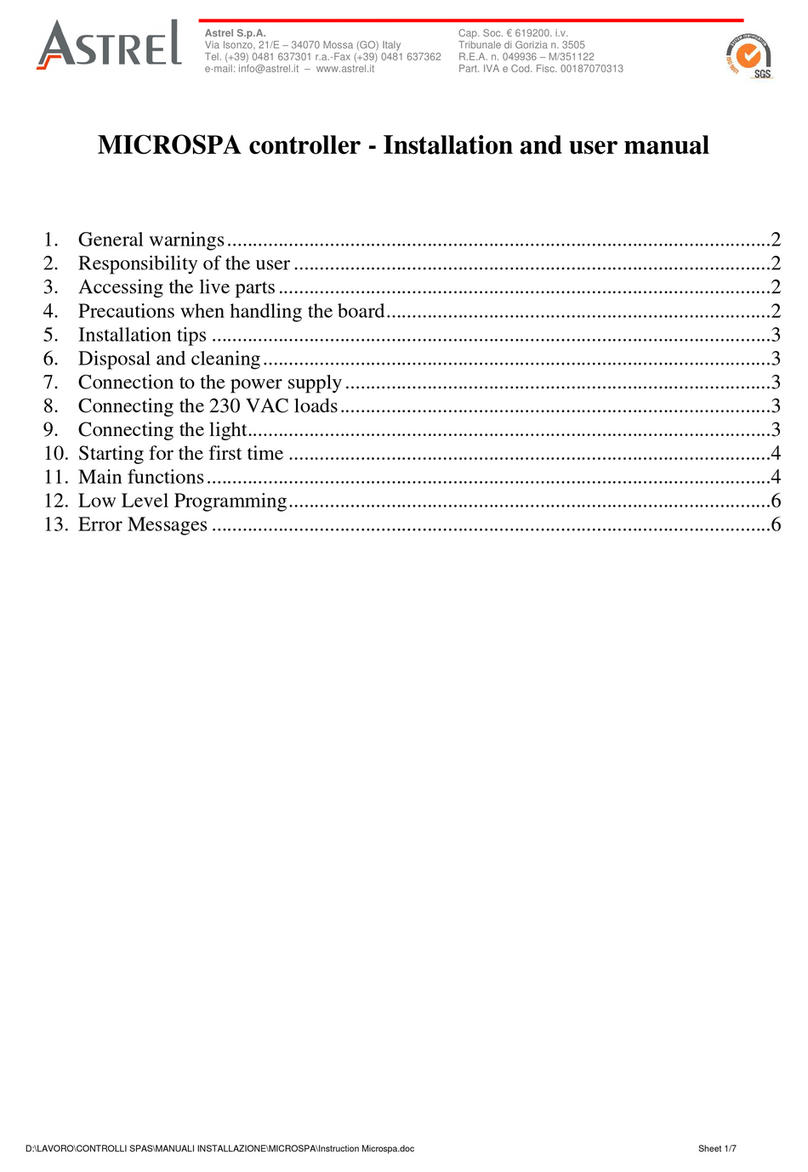
Astrel
Astrel MICROSPA Installation and user manual
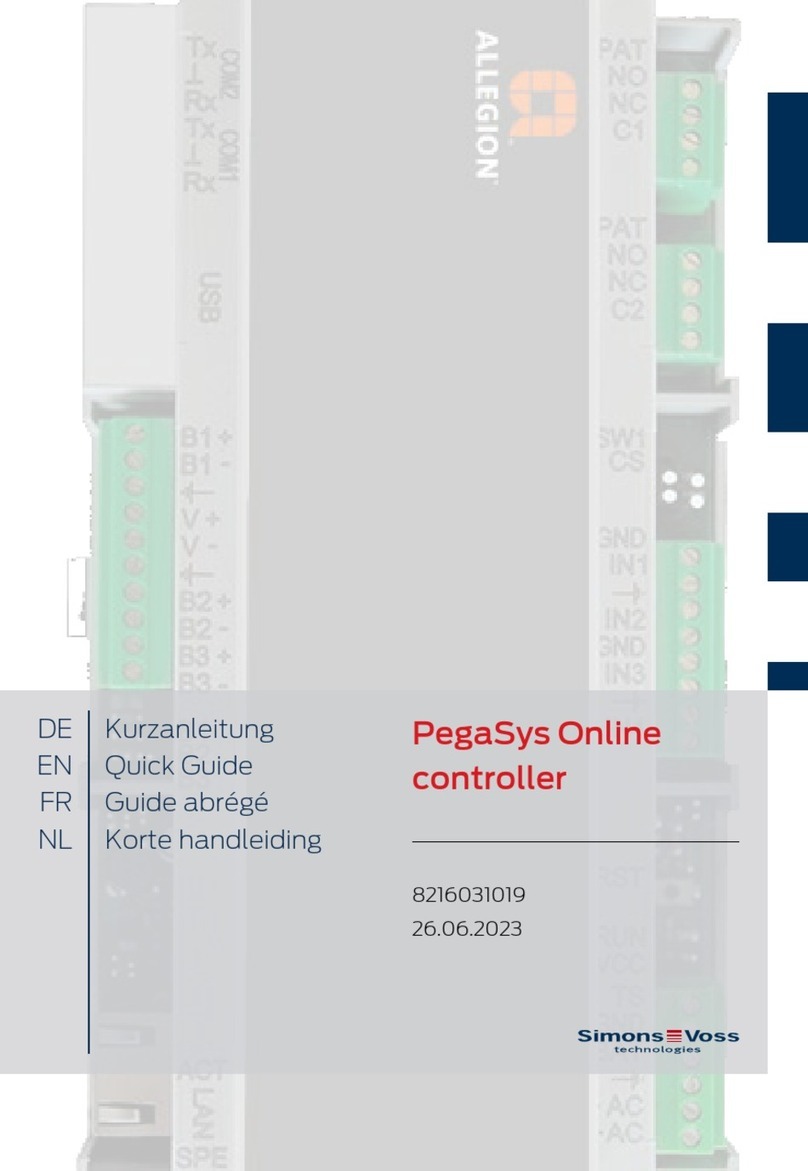
Simons Voss Technologies
Simons Voss Technologies Allegion PegaSys quick guide
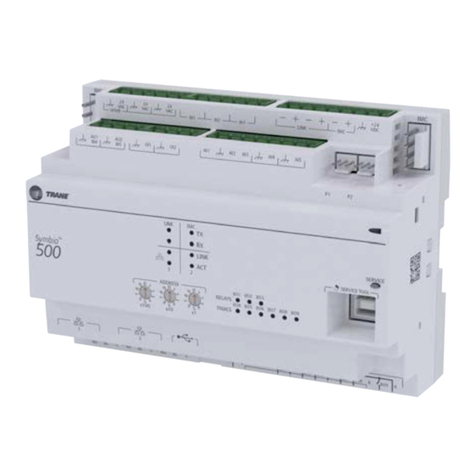
Trane
Trane Symbio 210 Installation, operation and maintenance
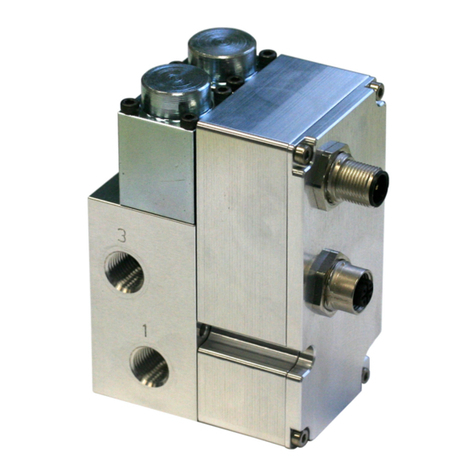
Emerson
Emerson AVENTICS Sentronic TWIN 615 Assembly instructions
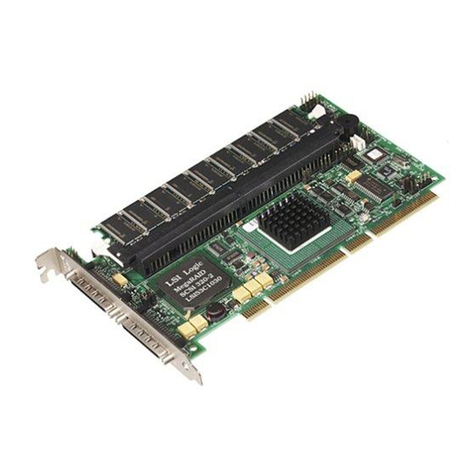
LSI
LSI MegaRAID SCSI 320-0 Zero-Channel RAID Controller Series... Configuration
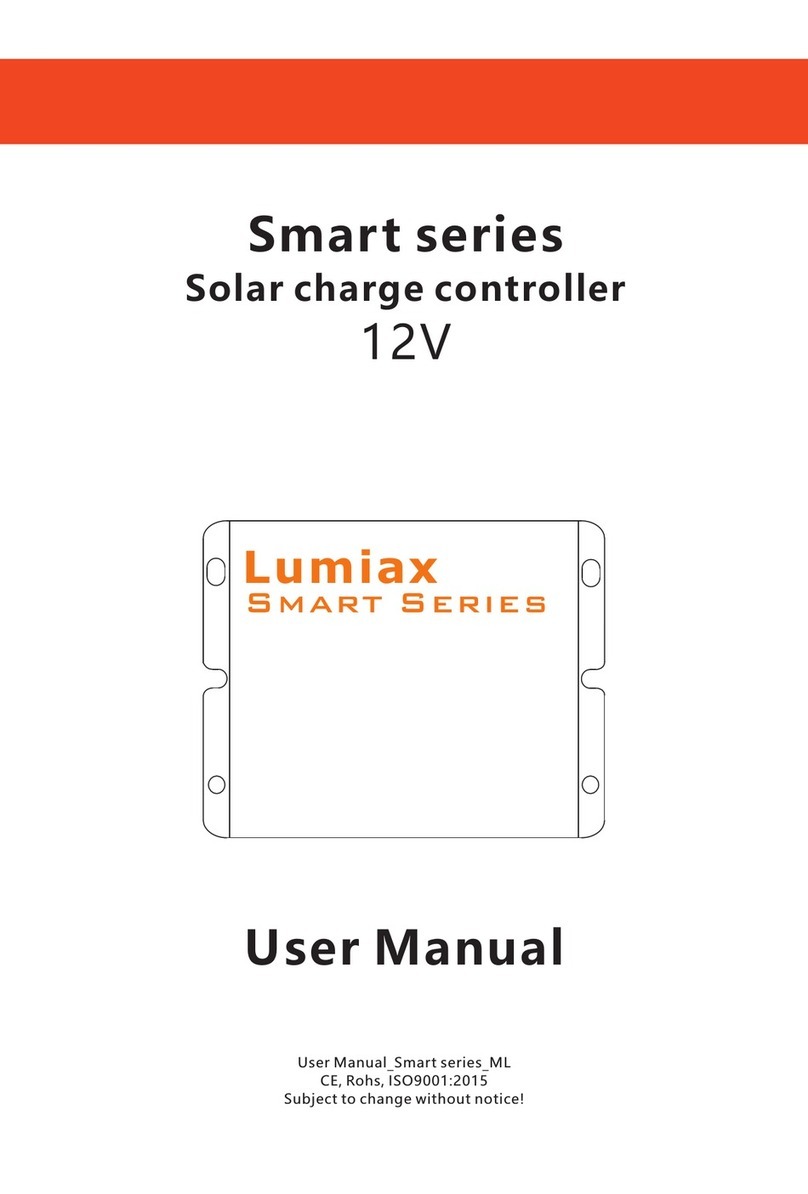
Lumiax
Lumiax Smart Series user manual

